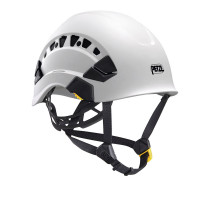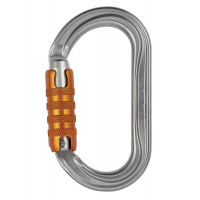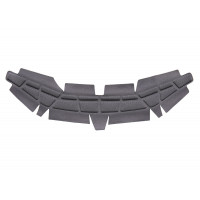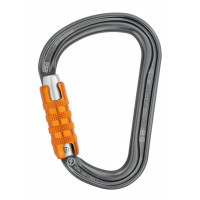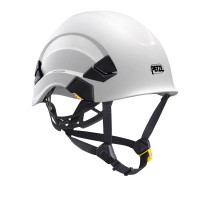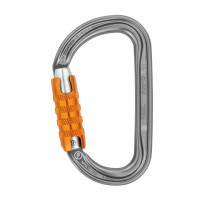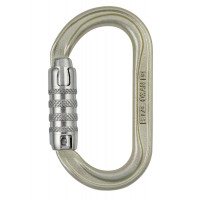WARNINGS
- Read the technical notice before viewing the following techniques.
- It is important to fully understand the information provided in the technical notice before using this complementary information
- Mastering these techniques requires training.
- Consult a professional before attempting to perform these techniques on your own
INTRODUCTION:
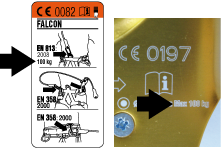
Some Petzl products show 100 kg.
Only the EN 341 (descenders), EN 12841 (rope access) and EN 813 (Seat harnesses) standards allow certification for masses over 100 kg.
For all other equipment, European standards require testing with a mass of 100 kg.
The requirements of the standards only partly cover the consequences of a fall of a 100 to 140 kg user (including equipment)
Petzl has carried out a series of tests for masses up to 140 kg and offers three solutions suitable for the forces generated on the equipment and the user.
The fall of a 140 kg mass increases the energy on the system by 40 %, compared to that of a 100 kg user. If the equipment is unable to absorb this extra energy, two solutions are possible: use equipment with higher energy absorption capacity, or change the work situation to reduce the potential fall height.

SOLUTION 1: Reduce the fall height
The potential fall height can be reduced by using a shorter lanyard.

SOLUTION 2: Increase the absorption capacity of the system
Use equipment capable of absorbing 40 % more energy.

SOLUTION 3: Do not change anything
The absorption capacity of the system is sufficient.
STATIC BREAKING STRENGTH OF THE EQUIPMENT
This is the equipment's ability to hold a suspended mass.

The static breaking strength of PPE certified for fall arrest or positioning is between 10 kN (1000 kg) and 30 kN (3000 kg), depending on the equipment.
A weight of 140 kg is then 7-20 times less than the breaking strength of new equipment.
DYNAMIC CAPACITY OF THE EQUIPMENT
This is the equipment's ability to hold and/or absorb a fall.
A fall of a 140 kg user with his equipment can exceed the absorption capacity of the shock absorber.
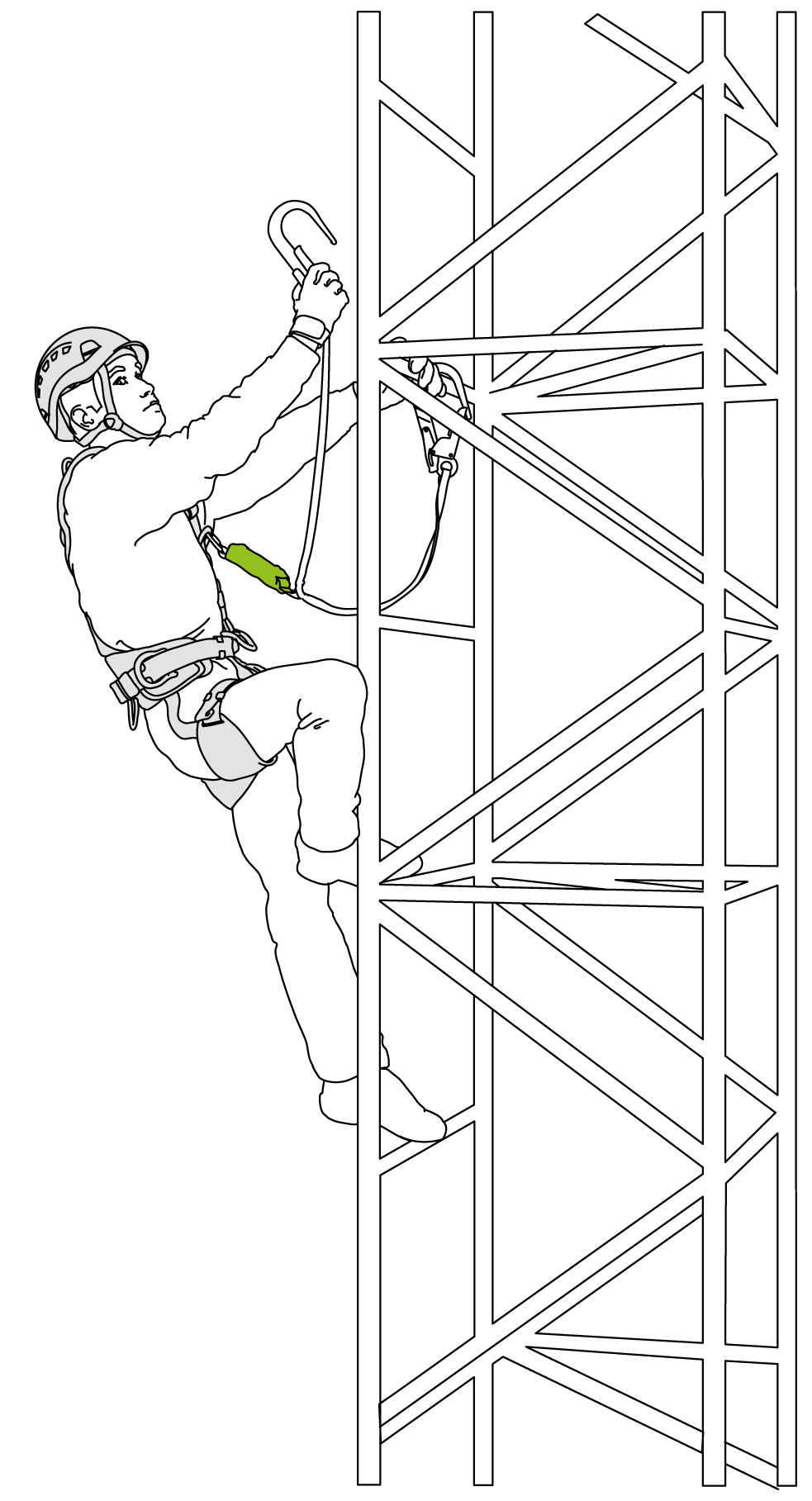

The energy produced by a fall is directly proportional to the weight of the subject: E = mgh. A 140 kg user generates 40 % more energy than a 100 kg user for the same fall (5494 J vs. 3920 J). This extra energy can exceed the absorption capacity of the system, the impact force can then exceed 7 kN.
Fall arrest means to slow the moving body until it stops completely.
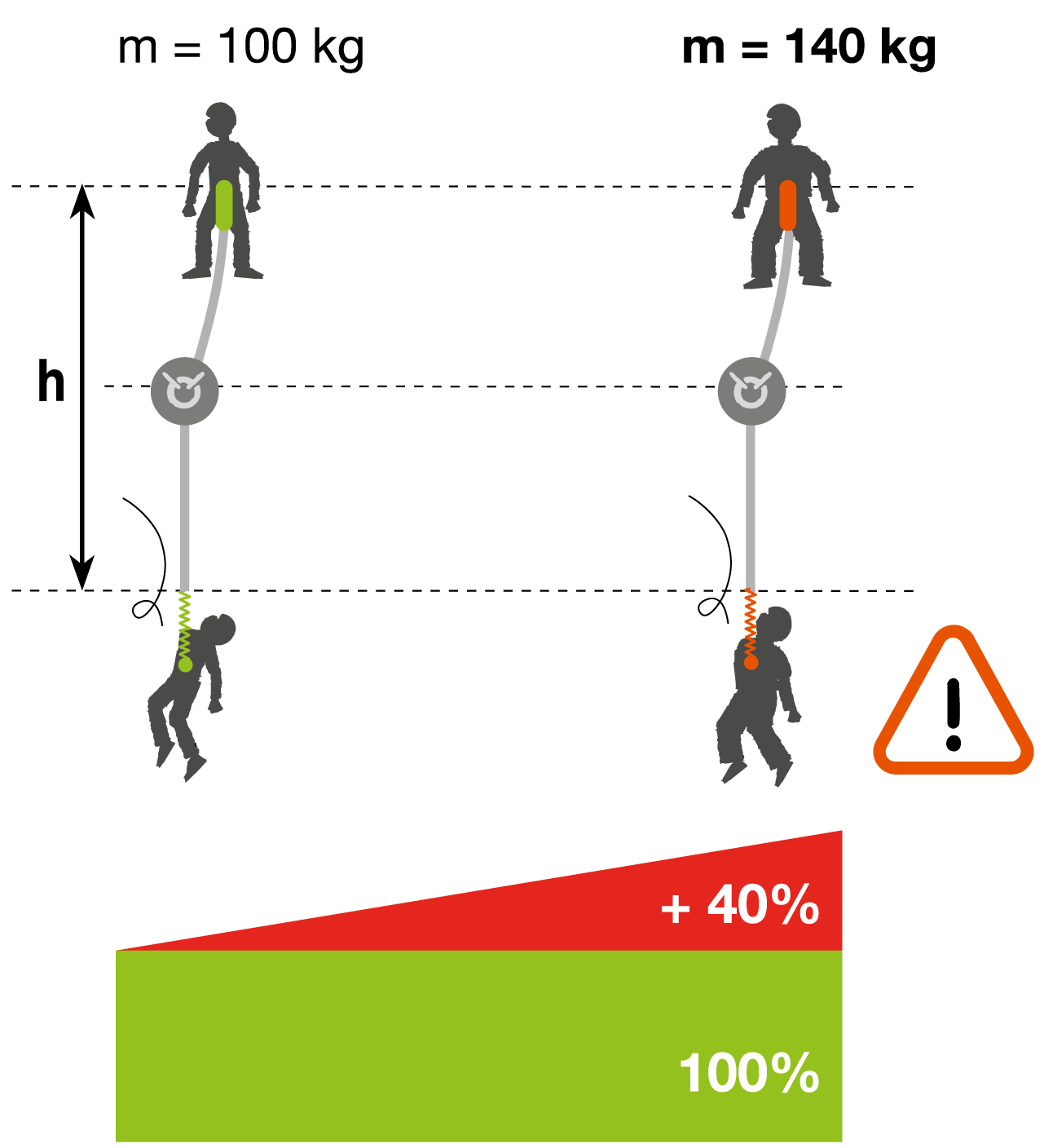
E = mgh potential energy.
E = energy in joules.
h = fall height in meters.
m =mass of the user and his equipment, in kg.
g = 9.81 m/s2. Corresponds to the earth's gravitational field (or gravity).
Braking can be rapid (sudden impact) or gradual (reduced impact). The absorption capacity of the equipment (dynamic lanyard or shock absorber) increases the braking time to reduce the impact force. With a rigid system, the load on the system very quickly exceeds 15 kN or more, even with short falls of fall factor less than 1.
Example of an 80 kg /0.6 m fall
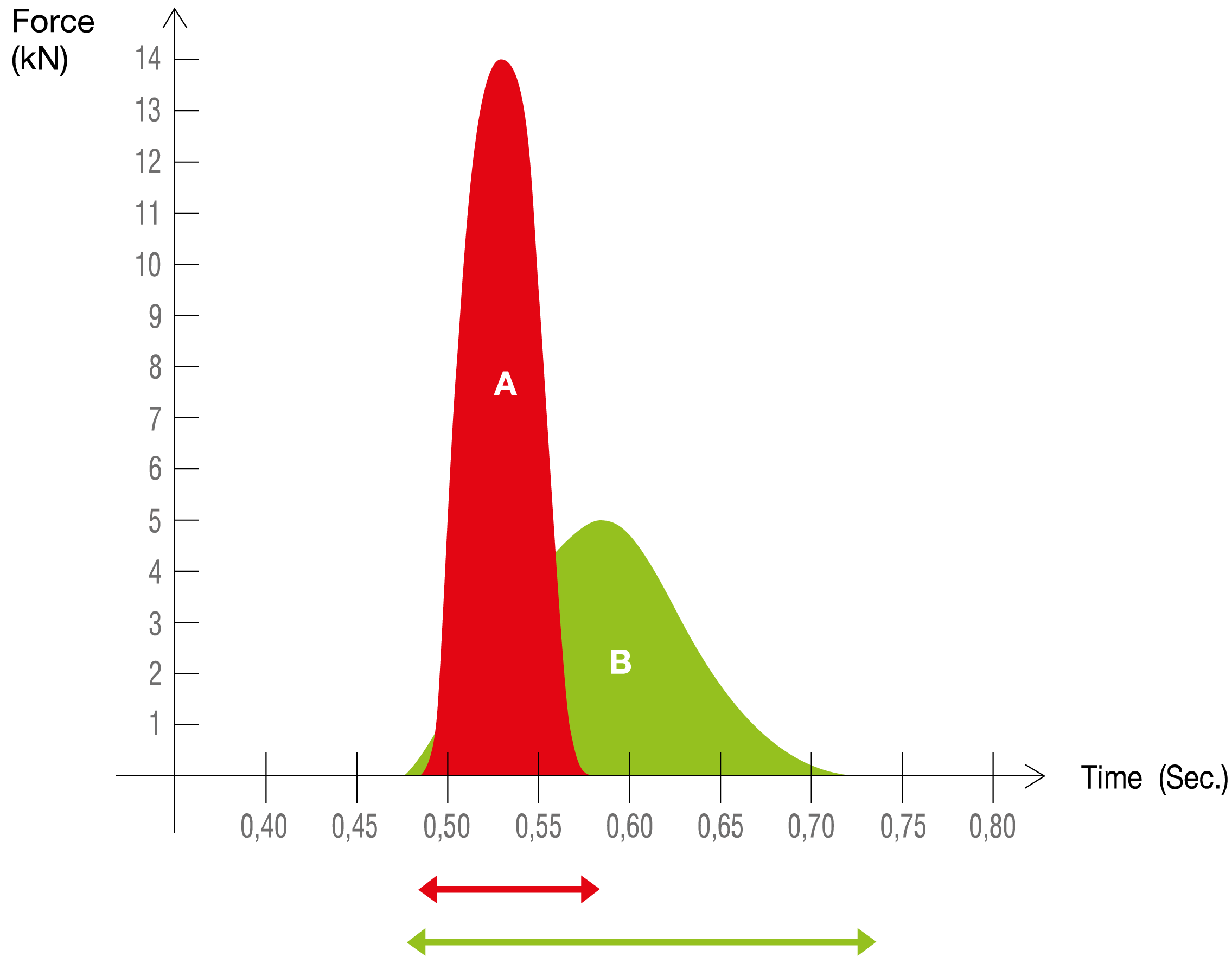
Identical fall energy:
Area A = Area B
 Fall onto static system
Fall onto static system
 Fall onto dynamic lanyard or absorber
Fall onto dynamic lanyard or absorber
 Sudden deceleration
Sudden deceleration
 Slow deceleration
Slow deceleration
RESISTANCE OF THE HUMAN BODY TO A DYNAMIC LOAD
This is the body's capacity to withstand a fall. The braking of a fall can be rapid (short, sudden impact) or gradual (softer impact, longer absorption time). For a given fall speed, the time between the onset of braking and complete stop determines the value of the deceleration, expressed in G.
The European standards are based on studies which set the maximum acceptable deceleration at 6 G for a worker at height. On the basis of a deceleration not exceeding 6 G, the impact force experienced by the user depends on his weight: Sf = md.
Petzl absorbers are designed to provide 6 G deceleration for the fall of a 100 kg user. The impact force transmitted to the body will not exceed the 6 kN standardized value: Sf = 100 x 6 x 9.8 = 5.9 (6 kN).
The same deceleration for a 140 kg user generates a greater impact force: Sf = 140 x 6 x 9.8 = 8.2 (8 kN). It is recognized that the body does not suffer injury as the deceleration is less than or equal to 6 G. Petzl therefore allows that an impact force of up to 8 kN is acceptable for a user of 140 kg (including equipment).
Similarly, we can accept an impact force Sf = 120 x 6 x 9.8 = 7.1 (7 kN) for a user of 120 kg (including equipment).
In some situations, Petzl accepts that a user over 100 kg can undergo an impact force greater than 6 kN, provided that the maximum deceleration is limited to 6 G.
| Sf = md Sf = impact force expressed in kN m =mass of the user and his equipment, in kg d = deceleration expressed in G, corresponding to "n times" the acceleration caused by gravity at the Earth's surface: 9.81 m/s ² |
| Sf = md Sf for 100 kg and 6 G = 100 x 9.81 x 6 = 5.9 Sf for 120 kg and 6 G = 120 x 9.81 x 6 = 7.1 Sf for 140 kg and 6 G = 140 x 9.81 x 6 = 8.2 |
Evolution of acceptable impact force, as a function of the user's weight, for a maximum deceleration of 6G.
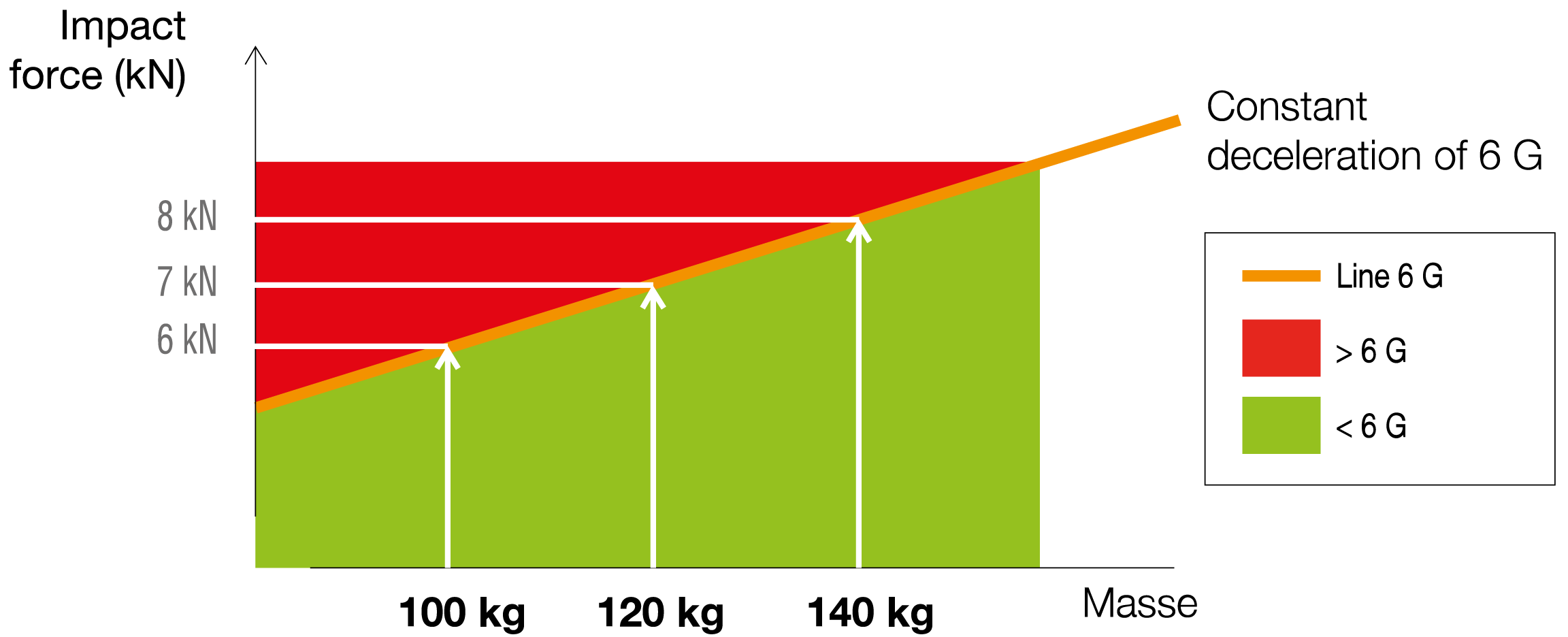
Related Petzl products



